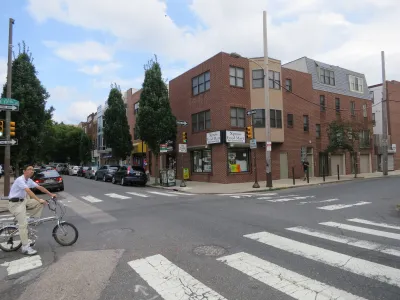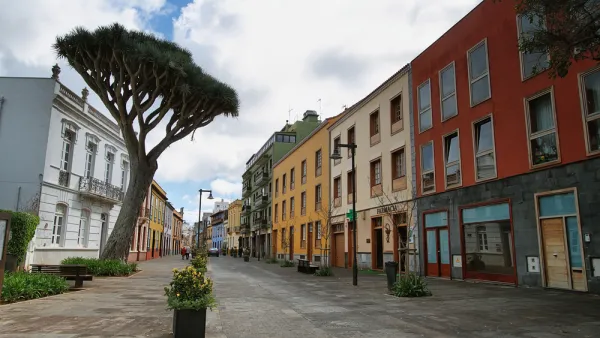For the first time in four years, a quarterly survey indicates “market saturation in urban areas.”

According to the quarterly survey of residential design trends from the American Institute of Architects, “market saturation in urban areas—and the resulting shift of development back to suburban areas—has caused demand for some community features related to accessibility to level off.”
Community features related to accessibility include infill development, tear-downs, access to public transit, walkable neighborhoods and recreational opportunities; while the decrease in demand is small, it is remarkable, given that “growing demands” for those features “have been a fixture of the AIA's third quarter report the past four years.”
The AIA’s findings are in line with the idea of “peak millennial” in American cities as members of a generation that once migrated towards cities are being priced out of dense urban areas, especially if they’re looking to buy homes.
Which isn’t to say that suburbs will look the same as they fill with millennials. "[H]omeowners still desire access to community amenities,” an AIA economist writes, even as “these results reflect a slowing of migration toward more dense neighborhoods.”
FULL STORY: DEMAND FOR COMMUNITY FEATURES RELATED TO HIGH DENSITY DEVELOPMENT HAS PLATEAUED

National Parks Layoffs Will Cause Communities to Lose Billions
Thousands of essential park workers were laid off this week, just before the busy spring break season.

Retro-silient?: America’s First “Eco-burb,” The Woodlands Turns 50
A master-planned community north of Houston offers lessons on green infrastructure and resilient design, but falls short of its founder’s lofty affordability and walkability goals.

Delivering for America Plan Will Downgrade Mail Service in at Least 49.5 Percent of Zip Codes
Republican and Democrat lawmakers criticize the plan for its disproportionate negative impact on rural communities.

Test News Post 1
This is a summary

Test News Headline 46
Test for the image on the front page.

Balancing Bombs and Butterflies: How the National Guard Protects a Rare Species
The National Guard at Fort Indiantown Gap uses GIS technology and land management strategies to balance military training with conservation efforts, ensuring the survival of the rare eastern regal fritillary butterfly.
Urban Design for Planners 1: Software Tools
This six-course series explores essential urban design concepts using open source software and equips planners with the tools they need to participate fully in the urban design process.
Planning for Universal Design
Learn the tools for implementing Universal Design in planning regulations.
EMC Planning Group, Inc.
Planetizen
Planetizen
Mpact (formerly Rail~Volution)
Great Falls Development Authority, Inc.
HUDs Office of Policy Development and Research
NYU Wagner Graduate School of Public Service





























